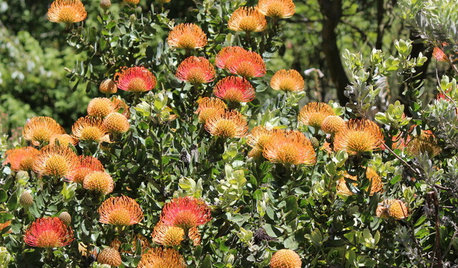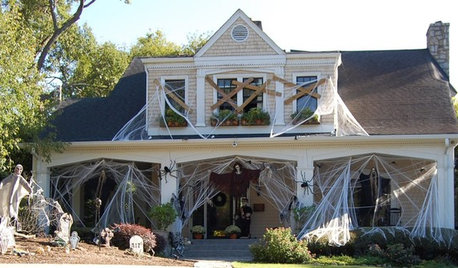Queen Anne's Lace as a Nurse Crop?
ahughes798
19 years ago
Related Stories

GARDENING FOR BUTTERFLIES3 Ways Native Plants Make Gardening So Much Better
You probably know about the lower maintenance. But native plants' other benefits go far beyond a little less watering and weeding
Full Story
GARDENING GUIDESHouzz Call: What’s Your Favorite Backyard Beauty?
The simple, honest daisy is this writer’s go-to garden flower. We want to hear which plant, flowering or otherwise, gives you special joy
Full Story
GARDENING GUIDESUnleash Your Guerilla Gardener
Toss some seed bombs around the yard for easy, beneficial plantings
Full Story
GARDENING GUIDESWhat’s in a Name? See 6 Wildflowers That Aren’t ‘Weeds’ at All
Dispel the stereotypes of weeds and try these wildlife-supporting native wildflowers in your garden
Full Story
BEDROOMS11 Reasons to Love White Bedding
For easy bedding that makes neutrals sing and accessories pop, look to the white side
Full Story
GARDENING GUIDESKeep Your Cool in the Garden — Here’s What to Do in August
Don’t let summer’s heat go to your head. These U.S. gardening guides will help you make sensible choices for all of your plantings
Full Story
GARDENING GUIDESWe Bust 4 More Native Plant Myths
Have you been taken in by these fallacies about gardening with native plants?
Full Story
EDIBLE GARDENSNatural Ways to Get Rid of Weeds in Your Garden
Use these techniques to help prevent the spread of weeds and to learn about your soil
Full Story






joepyeweed
john_mo
Related Professionals
Holly Springs Landscape Architects & Landscape Designers · Forest Park Landscape Architects & Landscape Designers · Walnut Landscape Architects & Landscape Designers · Zion Landscape Architects & Landscape Designers · Lake Worth Landscape Contractors · Marlborough Landscape Contractors · Newnan Landscape Contractors · Santa Maria Landscape Contractors · Camp Springs Landscape Contractors · San Pablo Landscape Contractors · Conroe Decks, Patios & Outdoor Enclosures · Fort Lee Decks, Patios & Outdoor Enclosures · Glendale Decks, Patios & Outdoor Enclosures · Green Bay Decks, Patios & Outdoor Enclosures · Hayward Decks, Patios & Outdoor EnclosuresRosa
ahughes798Original Author
froggy
Rosa
ahughes798Original Author
froggy
ahughes798Original Author
joepyeweed
ahughes798Original Author
ahughes798Original Author